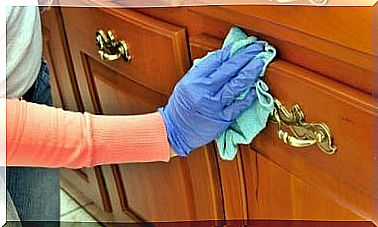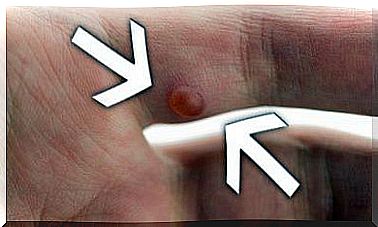Five Effective Exercises Against Intestinal Gases
Intestinal gases form in the digestive tract when you swallow air and bacteria reach undigested food. Learn more about exercises against intestinal gas below.

Intestinal gases form in the digestive tract when you swallow air and bacteria reach undigested food. Learn more about exercises against intestinal gas below .
The body expels the gas as “pups” to keep it from building up. However, the gases sometimes linger in the digestive tract and cause pain. Cramps and a flat stomach are often the result, which can be extremely painful and bothersome.
Fortunately, there are powerful intestinal gas exercises that can also relieve symptoms.
1. Ride a bike

Cycling, whether outdoors or on the exercise bike, your stomach can bring in motion and release in this manner intestinal gases.
2. Running against intestinal gases
Aerobic exercise stimulates the intestines and helps break down gas bubbles. Brisk walking helps circulate and clear up intestinal gases. Make sure you are breathing through your nose as you do this. In addition: shoulders back and head up!
3. Abdominal exercises against intestinal gases

Abdominal exercises allow the abdominal muscles to contract and relax, which helps relieve gas. They help move the intestinal gases efficiently through the digestive system.
- The best thing to do is lie down on your back on a mat, then bend your knees at a 45-degree angle and place your hands behind your back.
- As you inhale, lift your head, neck, and shoulders as you tense your abs.
- Make sure you let your abs do the work for you; Don’t overstretch or stiffen your neck.
- Then lower your head and exhale.
- Repeat this exercise 12 to 15 times.
4. Yoga poses

Many yoga poses or asanas can help reduce excess gas.
Colon gas-releasing pose or Pavanmuktasana
- Lie on your back and bring your right knee to your chest.
- Interlace your fingers on the top of your knee to keep it pressed against you that way.
- Then lift your head and try to touch your knee by your nose.
- Try to hold your breath and hold this position for 10 to 20 seconds.
- Now release the posture and straighten your leg.
- Then repeat this exercise with your other leg.
Cobra pose against intestinal gases

- Lie on your stomach and stretch your legs against the mat with the tip of your toes.
- Your hands should be flat on the floor under your shoulders.
- Now press your feet, hips and pubis against the mat and straighten your arms until your chest is as high as possible. Be careful to keep your lower body on the mat.
- Contract your glutes, keep your tailbone pressed and your shoulder blades back.
- Remain in this position for 15 to 30 seconds; your breathing should be calm and normal.
- Then return to the starting position.
- Repeat this pose up to 5 times until the pressure in your stomach subsides.
5. Sit on the floor with your knees against your chest
- You can enhance this exercise by placing both hands on your knees and then drawing circles by bringing both legs together to the right outside.
- Next, pull your knees up to your chest as far as possible, then repeat the process on the left side.
Causes of intestinal gases

There are many factors that cause excessive intestinal gas. Some are habits that you can change:
- Eat very quickly or talk while eating. This causes more air to be swallowed, creating gas.
- Do not chew food thoroughly.
- Drink non-alcoholic soft drinks or sweet drinks.
- Have a food intolerance.
- Medication or antibiotics.
- Eating foods that are difficult to digest can cause gas to build up, including: legumes, high fat dairy products, high fiber foods, and some vegetables.
- Conditions such as irritable bowel syndrome, constipation, dyspepsia, and tympanites.
- Prevent the accumulation of intestinal gases
It’s important that you take a few simple steps to prevent gas from building up while you eat:
- Eat slowly and chew your food thoroughly. This results in slower digestion without food fermenting in the stomach, which in turn leads to more intestinal gas.
- Avoid chewing gum or smoking, as both of these increase intestinal gas production.
- Do not use artificial sweeteners, as they interfere with digestion.
- Make it a habit to drink herbal teas or ingest herbs after lunch or dinner, as both will greatly improve digestion. Good recommendations include chamomile, lemon verbena, mint, and aniseed.
- Consult a doctor if you have intestinal gas and other symptoms such as abdominal or rectal pain, heartburn, nausea, or vomiting.









